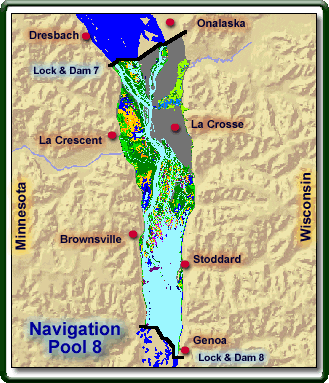- Home
- About S&T
- Taxa/Organisms
- Ecosystems
- Issues
- Methods & Tools
- Reports & Publications
- Location
- Search
Publisher: USGS | Science Center: Western Fisheries Research Center (WFRC, Seattle) | Format: URL
wfrc.usgs.gov — The whole study, conducted at Fort Benning, Georgia, partially funded through the US Army, involves testing of water and soil quality, physical and biotic indicators of stress at both the population and community level. Anthropogenic stress in the present study comes from disturbance by vehicles, particularly tanks used in army training, and from More...

Publisher: USGS | Science Center: Western Fisheries Research Center (WFRC, Seattle) | Format: URL
wfrc.usgs.gov — In an attempt to decrease pesticide pollution of aquatic ecosystems, we have begun a project to develop biological control agents to protect plants against fungal diseases. This study has three objectives: (1) understanding how fungi cause disease; (2) understanding how plants that are symbiotic with certain fungi are resistant to fungal diseases; More...

Publisher: USGS | Science Center: Western Ecological Research Center (WERC, Sacramento) | Format: URL
www.werc.usgs.gov — Riparian vegetation is intimately linked to the stream and river channels along which it grows. This project addresses the status of the riparian zone along Redwood Creek north coastal California, and answers three questions: 1) How have the overstory riparian conditions changed in Redwood Creek and major tributaries since the advent of timber More...

Publisher: NBII | Format: URL
www.nbii.gov — Natural resource managers face complex decisions that require a clear understanding of the status of wildlife populations and their habitats. Monitoring is key to making effective management decisions and evaluating the outcomes of those decisions. The goal of NRMP is to improve the accessibility of monitoring efforts to resource managers to aid More...

Publisher: USGS | Science Center: Fort Collins Science Center (FORT, Ft. Collins) | Format: URL
www.fort.usgs.gov — Natural Resource Monitoring Partnership (NRMP) is a collaborative effort by the natural resource management community to improve monitoring efforts in order to support effective evaluation and decision-making by sharing information on monitoring projects and protocols. The Natural Resource Monitoring Partnership was built for easy access to More...

Publisher: USGS | Science Center: Upper Midwest Environmental Sciences Center (UMESC, LaCrosse) | Format: URL
www.umesc.usgs.gov — The diversity of habitat types, plants, and animals in the Upper Mississippi River has declined considerably over the last 50 years, creating loss of aquatic vegetation, loss of islands and side channels behind dams, and changes in river sediments, potentially caused by the method of managing water levels, which maintains artificially high water More...
